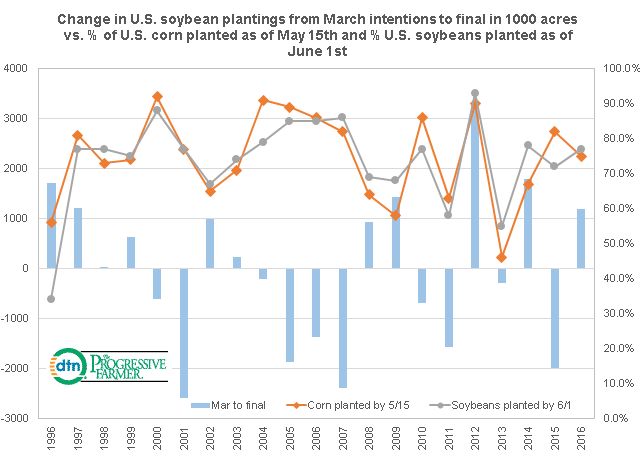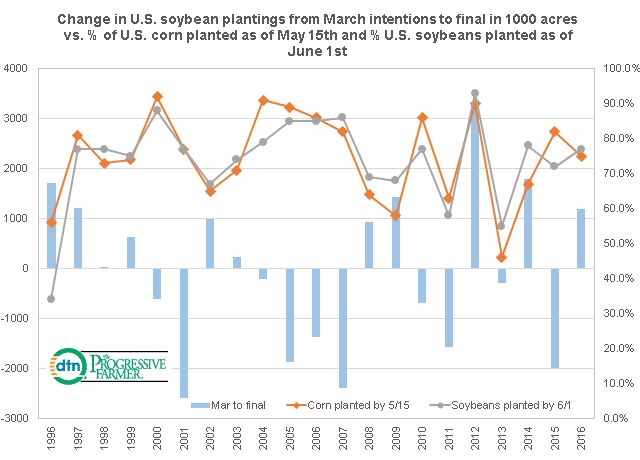Fundamentally Speaking
Soybean Acreage Changes vs Corn & Soybean Planting Pace
Heading into the end of March prospective planting report, expectations are that U.S. corn acreage will decline and some of that lost area, along with the already-reported 3.4 mln acre decline in domestic winter wheat seedings to the lowest levels since 1909, will spur a large rise in U.S. soybean seedings this year.
Even if the USDA does confirm the famers intend to seed the largest amount of soybeans ever is this likely to be confirmed when the final acreage figures are tallied in January 2018?
This graphic shows the change in U.S. soybean seedings from the end of March intentions report to the final planted area figures that are part of the Annual Crop Production report in thousand acres.
P[L1] D[0x0] M[300x250] OOP[F] ADUNIT[] T[]
We plot that vs. the percent of U.S. corn planted as of May 15th and the percent of U.S. soybean seeded as of June 1st.
Our thinking was that a year in which corn saw late plantings could result in more soybeans actually put in the ground than farmers had intended while conversely a year in which soybean seedings were delayed could result in lower than intended soybean acreage.
In the 1996-2016 period the average acreage shift has been a mere 7,000 acres but that has ranged from a 2.582 million acre decline from the March intentions to the final figures in 2001 up to a 3.296 million increase in 2012.
The average for corn seedings by May 15th is 75% ranging from a low of 46% in 2013 to a high of 92% in 2000 while the average pace for soybean seedings as of June 1st is 74% ranging from a low of 34% in 1996 to a high of 93% in 2012.
Interestingly the years that saw the largest acreage declines in 2001 and 2007 saw both corn and soybean seedings above the average pace while the largest acreage increases in 2012 also saw very fast seedings.
The correlations between acreage changes in the pace of both corn and soybean plantings are also very low.
This suggests that price considerations (the soybean/corn ratio or prospective net return per acre figures) are probably more influential along with genetic advancements in soybean seeds that have faster maturing varieties yielding almost as much as full season hybrids these days.
(KA)






Comments
To comment, please Log In or Join our Community .